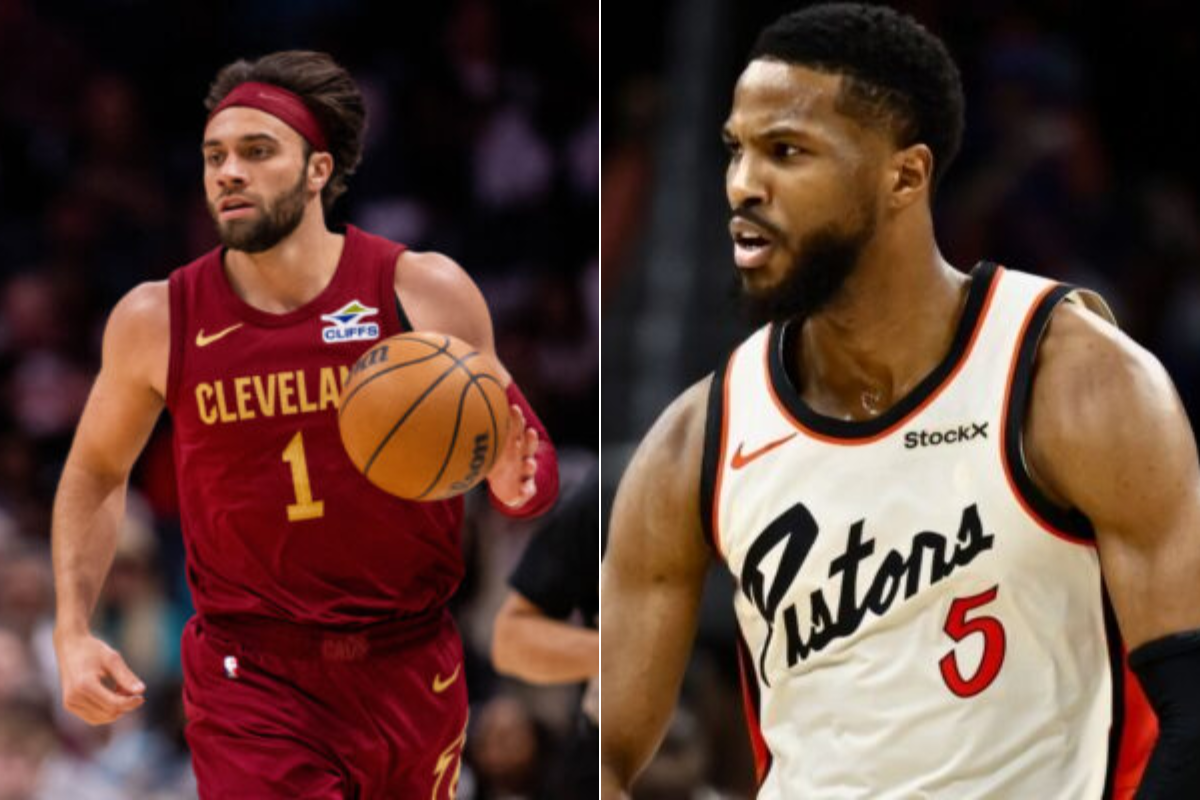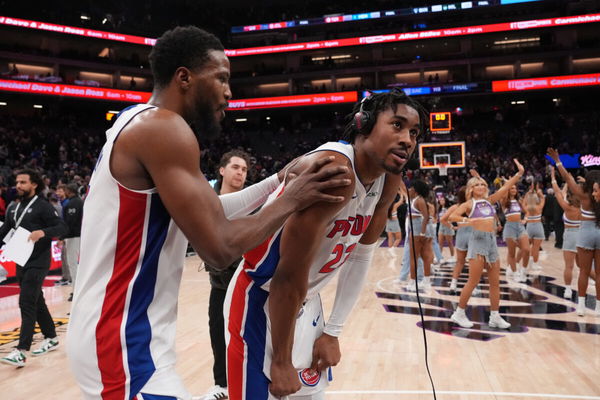
Imago
Image Credits: IMAGN Images

Imago
Image Credits: IMAGN Images
The Cleveland Cavaliers’ offseason plan wasn’t meant to unravel this way. A team banking on continuity suddenly faces a void in its wing rotation that could stretch into the heart of the season. Max Strus, their reliable floor spacer and high-minute wing, is sidelined, with his recovery clock ticking almost halfway into the season.
Watch What’s Trending Now!
The reaction has been swift, but not simple. Names are being whispered, calls are being made, and among them is Malik Beasley: a volume shooter with history in the league and ties that stretch across front offices. The Cavs have entered the conversation, but so have other teams. What happens next could decide how Cleveland starts the season, and whether a desperate chase turns into a misstep.
As reported by Mike A. Scotto: “The Knicks and Cavaliers have checked in on Malik Beasley, sources told @hoopshype. Knicks executive Gersson Rosas signed Beasley to a four-year, $60M deal with the Timberwolves. Knicks and Cavs have minimum deals to offer. Beasley is no longer a target of a federal investigation.” That history with Rosas lingers; Beasley’s best stretch came under his watch in Minnesota, where he averaged over 19 points a night for two seasons.
ADVERTISEMENT
Update: The Detroit Pistons and Minnesota Timberwolves have recently touched base on Malik Beasley, along with the New York Knicks and Cleveland Cavaliers, sources told @hoopshype. It’s worth noting Cavs guard Max Strus expects to miss 3-4 months after Jones fracture foot surgery https://t.co/IRtjgG5oIb
— Michael Scotto (@MikeAScotto) August 26, 2025
Scott also added in a later post, “Update: The Detroit Pistons and Minnesota Timberwolves have recently touched base on Malik Beasley, along with the New York Knicks and Cleveland Cavaliers, sources told @hoopshype. It’s worth noting Cavs guard Max Strus expects to miss 3-4 months after Jones fracture foot surgery.” The Cavaliers‘ desperation is now known around the league.
Cleveland has built this rotation with the idea to be steady rather than spectacular: Donovan Mitchell and Darius Garland driving the offense, and bench lineups with De’Andre Hunter and Dean Wade flanking the wings, and Larry Nance Jr. shoring up the frontcourt. Strus was the connector: his 38.6% three-point shooting and steady presence turned broken possessions into points. With him out for three to four months, spacing is fractured. Hunter will be asked to step into the starting lineup, Wade will absorb heavier defensive loads, and sophomore Jaylon Tyson could be thrust into action far earlier than planned.
ADVERTISEMENT
This isn’t just about one player. It’s about how quickly a roster can shift from planned cohesion to patchwork. Beasley offers the archetype they need: a quick-trigger shooter willing to stretch defenses and able to slot in without heavy playmaking demands. But the market is no longer theirs alone to navigate.
Other than New York, Detroit and Minnesota have entered the fray: one a rising roster promising minutes and a known system, the other an old setting where Beasley once thrived. That competition tightens the window for Cleveland. Each day without a decision means fewer clean paths left.
ADVERTISEMENT
Malik Beasley’s Market Heats Up
Beasley built his name in Minnesota, where he averaged 19.6 points on 39.9% from deep during his peak year in the two-season run under Gersson Rosas, establishing himself as one of the league’s most fearless gunners. That stint laid the foundation for his reputation: a player who could change spacing dynamics overnight and thrive as a high-volume option alongside ball-dominant guards.

Imago
Dec 26, 2024; Sacramento, California, USA; Detroit Pistons guard Malik Beasley (5) celebrates with guard Jaden Ivey (23) after the win against the Sacramento Kings at Golden 1 Center. Mandatory Credit: Kelley L Cox-Imagn Images
His time in Detroit offered something different: durability and impact in a structured role. Across 82 games last season, Beasley averaged 16.3 points, 2.6 rebounds, and 1.7 assists while shooting 41.6% from deep. He became a staple of their second unit, anchoring a Pistons offense that was still shaping its identity around Cade Cunningham and Jaden Ivey. His 319 threes set a franchise record and propelled him to a runner-up finish for Sixth Man of the Year, showing he could adapt without commanding a starring role.
ADVERTISEMENT
That production is why Detroit hasn’t backed away, valuing the chemistry built with their young core. If they explore the possibility of a reunion, Minnesota can see a fit in the same off-ball role that once made him one of their most reliable weapons. Cleveland, meanwhile, presents an entirely different pitch: a premier contender with a defined hole in its rotation, looking for someone who can step in immediately and provide gravity without reshaping their playbook.
The challenge? Financial reality. Both the Cavs and Knicks are limited to minimum offers, while Detroit can match that stability with opportunity and a familiar system. Coming off one of his most efficient seasons, Beasley will have to weigh what matters more: guaranteed minutes in a familiar setting or a chance to make playoff noise elsewhere.
ADVERTISEMENT
ADVERTISEMENT
ADVERTISEMENT
ADVERTISEMENT

